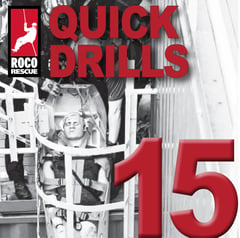
Each participant would be given all necessary equipment to complete the required tasks. Depending on the number of participants, and equipment on hand, evaluators would build the desired number of lanes to operate. Once participants have had a chance to look over the equipment, and ask any questions, evaluators would give each a set time to complete all tasks (e.g., 15 minutes).
Once time is started, each participant would complete the following:
- Build a fixed line system (evaluators would run a safety line and have the participant focus on main line systems only) and rappel down a single floor.
- Once on the deck, participants would hook up a patient/package to the main line.
- Patient can be a manikin in a Sked/stokes or a live victim in a harness.
- It could be an option to have the participant actually package the patient (would add more time to scenario, but would be good practice).
- Any other package could be used in place of a patient, this is up to the organizers.
- Once the patient/package is secured to the main line (again, the participant is not responsible for a secondary line), the participant would ascend back up to the starting point using their preferred method.
- Upon completion of the ascending portion, the participant would disconnect the fixed line system and create a hauling system to bring the patient/package up the single floor.
- Evaluators/other participants would assist with transitioning the patient/package over the edge for safety.
- Participants could either be allowed to choose a high or low-point anchor, or be given directions to use a specific anchor. This is up to the evaluator.
- Tag line personnel could be provided if necessary.
- Once the patient/package has been placed securely on the deck, the participant would transition the hauling system to a lowering system and lower the patient/package back to the starting point.
- As with the hauling system, evaluators/other participants would assist with transitioning the patient/package over the edge until system is loaded.
- Participants could either be allowed to choose a high or low-point anchor, or be given directions to use a specific anchor. This is up to the evaluator.
- Tag line personnel could be provided if needed.
- When the patient/package is securely back to the starting point, the exercise is complete. Evaluators will then critique/discuss the participant’s performance.
NOTICE: Based on the physical condition of participants, the heights and time limits may need to be adjusted. The basis of the exercise is to have an individual build a system to rappel, reach a patient, attach the patient to the system, ascend, and convert to a lowering system.
Check out more Roco QUICK DRILL Challenges


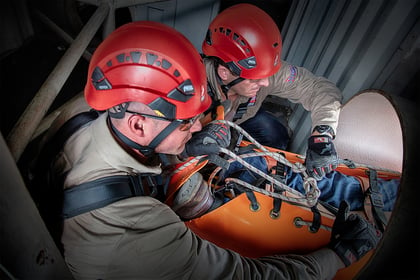 If entering permit-required confined spaces is performed at your worksite, then this is a question you absolutely should be asking yourself. And if you are, that is a good thing; it implies knowledge of OSHA’s requirement that an organization must provide for the safety of their personnel working in confined spaces.
If entering permit-required confined spaces is performed at your worksite, then this is a question you absolutely should be asking yourself. And if you are, that is a good thing; it implies knowledge of OSHA’s requirement that an organization must provide for the safety of their personnel working in confined spaces.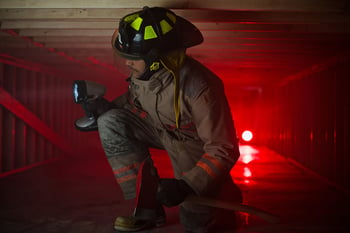 Upon learning that using local emergency services is potentially an allowable confined space rescue option, many organizations see this as the easy choice and quickly check that box. They are thrilled that they are not having to spend any money or devote any personnel to the task. These entities may also secretly wonder what all the hubbub is about regarding confined space rescue, but they very well may learn the hard way should an incident occur.
Upon learning that using local emergency services is potentially an allowable confined space rescue option, many organizations see this as the easy choice and quickly check that box. They are thrilled that they are not having to spend any money or devote any personnel to the task. These entities may also secretly wonder what all the hubbub is about regarding confined space rescue, but they very well may learn the hard way should an incident occur.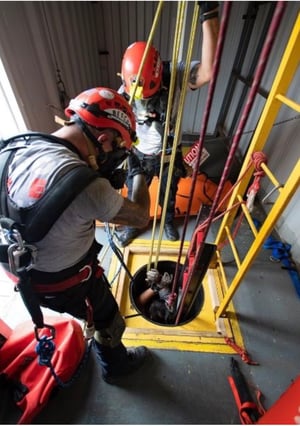 When contemplating the utilization of in-house teams, it is important to note the composition of most. It is the rare organization that staffs personnel whose sole job it is to provide confined space rescue and standby services. Most in-house teams consist of personnel who have other jobs, e.g., operators, engineers, maintenance persons, etc., who are trained to provide rescue and thus called out for standbys or actual emergencies.
When contemplating the utilization of in-house teams, it is important to note the composition of most. It is the rare organization that staffs personnel whose sole job it is to provide confined space rescue and standby services. Most in-house teams consist of personnel who have other jobs, e.g., operators, engineers, maintenance persons, etc., who are trained to provide rescue and thus called out for standbys or actual emergencies.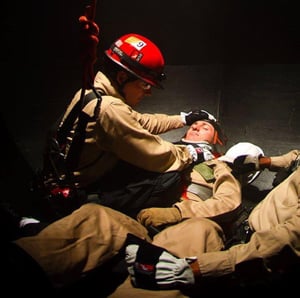 This brings us to the third option—contracted rescue services. If an organization infrequently performs permit-required entries, this option makes good sense. And it can be a far less expensive option than training, staffing, and equipping an in-house team.
This brings us to the third option—contracted rescue services. If an organization infrequently performs permit-required entries, this option makes good sense. And it can be a far less expensive option than training, staffing, and equipping an in-house team.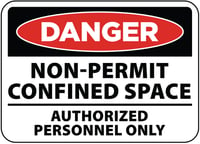 Regardless of which option you choose for confined space rescue services, it is important that you do it right. If you are contracting out the provision of rescue, you are obligated to thoroughly investigate the provider’s credentials and client references. You can be assured that when an accident happens, OSHA will perform a forensic review of your documentation and your policies, as well as those of your rescue service. If you have skipped a step or only addressed them in cursory fashion, OSHA will discover it and potentially issue citations and fines. But one should never lose sight of the fact that the real loser in this scenario is the employee who receives poor or delayed care during the emergency.
Regardless of which option you choose for confined space rescue services, it is important that you do it right. If you are contracting out the provision of rescue, you are obligated to thoroughly investigate the provider’s credentials and client references. You can be assured that when an accident happens, OSHA will perform a forensic review of your documentation and your policies, as well as those of your rescue service. If you have skipped a step or only addressed them in cursory fashion, OSHA will discover it and potentially issue citations and fines. But one should never lose sight of the fact that the real loser in this scenario is the employee who receives poor or delayed care during the emergency.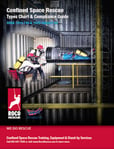
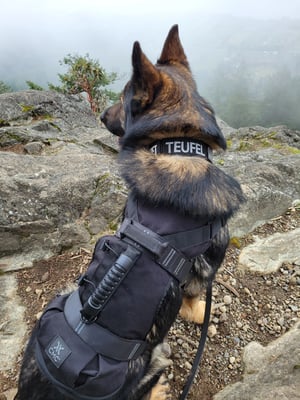
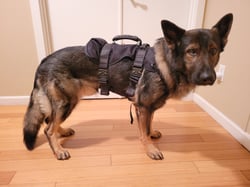 Finding a CE/UIAA certified harness for your K9 partner will be challenging or nearly impossible. However, dogs do need a properly fitting harness that is rated to a minimum breaking strength of at least 10 times the dog’s weight. Many working dogs wear vests that have a harness built in which can be acceptable, but plastic buckles that are prevalent on many K9 vests don’t cut it for rope access work.
Finding a CE/UIAA certified harness for your K9 partner will be challenging or nearly impossible. However, dogs do need a properly fitting harness that is rated to a minimum breaking strength of at least 10 times the dog’s weight. Many working dogs wear vests that have a harness built in which can be acceptable, but plastic buckles that are prevalent on many K9 vests don’t cut it for rope access work. 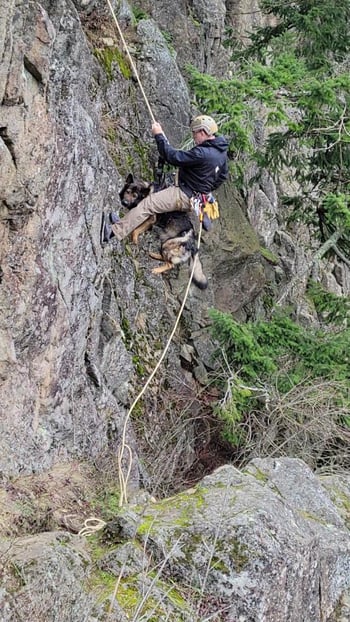 Once the dog is accustomed to the harness and being suspended, most of the dog’s training is done. For climbing and/or rappelling, the training curriculum a handler should undergo includes knot tying, anchor building, ascending and descending rope, belaying, and building and using mechanical advantage systems for hauling. Once a handler is confident and competent on the rope, the dog can be introduced.
Once the dog is accustomed to the harness and being suspended, most of the dog’s training is done. For climbing and/or rappelling, the training curriculum a handler should undergo includes knot tying, anchor building, ascending and descending rope, belaying, and building and using mechanical advantage systems for hauling. Once a handler is confident and competent on the rope, the dog can be introduced. 
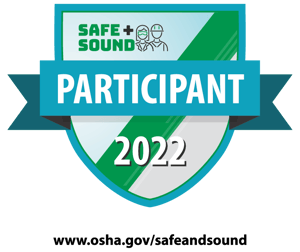
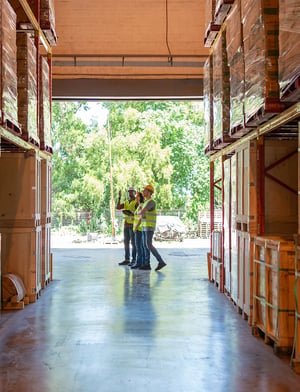
 4. Allow workers to lead trainings.
4. Allow workers to lead trainings. 
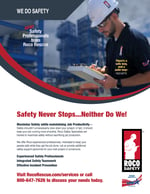
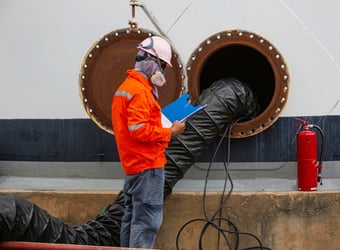
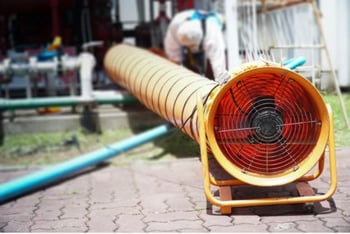 At the declaration of an emergency, deploying ventilation and performing air monitoring should occur concurrently with size up. Starting ventilation is like applying a cervical collar at the scene of an automobile accident; it is one of those things you know you are going to perform each and every time. And while it is expected that everyone will be appropriately trained, ventilation can be handled by support personnel while the rescue technicians are readying for entry.
At the declaration of an emergency, deploying ventilation and performing air monitoring should occur concurrently with size up. Starting ventilation is like applying a cervical collar at the scene of an automobile accident; it is one of those things you know you are going to perform each and every time. And while it is expected that everyone will be appropriately trained, ventilation can be handled by support personnel while the rescue technicians are readying for entry.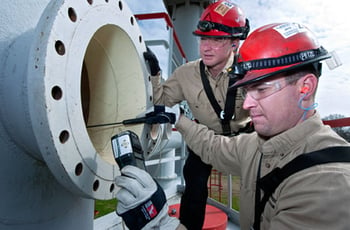 Just as important as the fans is a solid air monitoring plan. The rescuers should be aware of the potential atmospheric hazards and have obtained the appropriate monitoring equipment. The air monitoring should continuously measure the entire space with results constantly provided to the vent team; this allows for adjustments if a particular part of the space is not seeing the expected improvements in air quality.
Just as important as the fans is a solid air monitoring plan. The rescuers should be aware of the potential atmospheric hazards and have obtained the appropriate monitoring equipment. The air monitoring should continuously measure the entire space with results constantly provided to the vent team; this allows for adjustments if a particular part of the space is not seeing the expected improvements in air quality.


